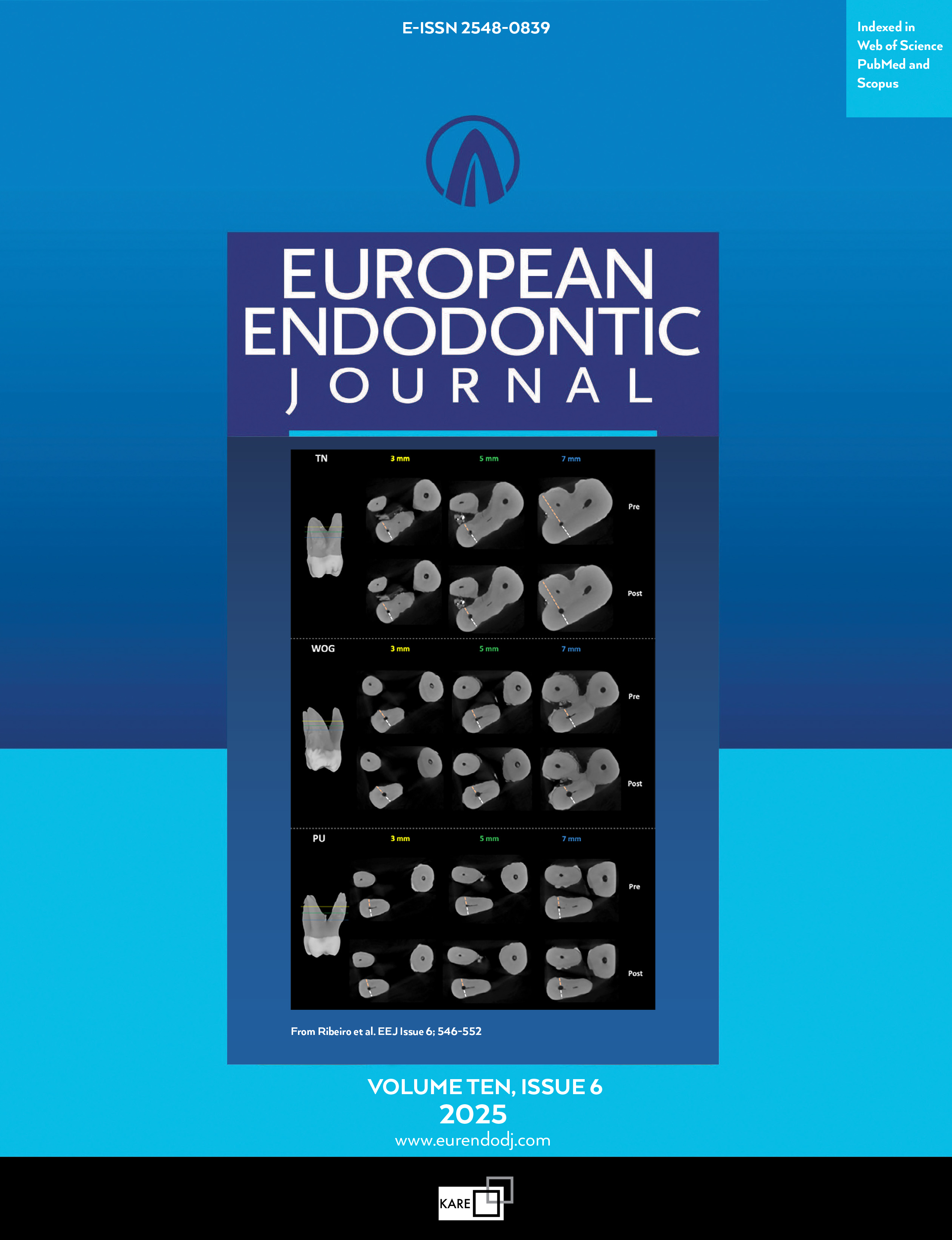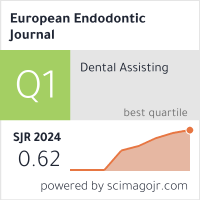Metrics
2024 IMPACT FACTOR
5 year Impact Factor
Eigenfactor Score
2024 CiteScore
Journal Citation Reports
(Clarivate 2025, JIF Rank)
Microbiological Investigation in Teeth with Persistent/Secondary Endodontic Infection in Different Stages of Root Canal Retreatment
Marlos Barbosa-Ribeiro, Rodrigo Arruda-Vasconcelos, Lidiane Mendes Louzada, Augusto Rodrigues Lima, Marina Marciano, Jose Flavio Affonso de Almeida, Adriana De- Jesus- Soares, Alexandre Augusto Zaia, Caio Ferraz, Brenda Paula GomesDepartment of Department of Restorative Dentistry, Division of Endodontics, Piracicaba Dental School, State University of Campinas-UNICAMP, Piracicaba, SP, BrazilObjective: The present clinical study investigated the microbiota of teeth with persistent secondary endodontic infection in the different phases of root canal retreatment.
Methods: Twenty filled single-rooted teeth with apical periodontitis were included. Samples were collected with sterile paper points before chemo-mechanical preparation (CMP) (S1), after CMP (S2) and after 30 days of calcium hydroxide-based intracanal medication (ICM) (S3). Cultivable bacteria were assessed by colony forming units count (CFU/mL). DNA was extracted and assessed by using nested PCR. Paired t-test and repeated measures ANOVA were applied for intragroup analysis in the stages of endodontic therapy at a significance level of 5%.
Results: Cultivable bacteria were detected in all initial samples. CMP reduced bacteria by 99.4% and ICM by 99.5%. The most prevalent species found in the initial samples were E. faecalis (20/20), P. gingivalis (20/20), F. nucleatum (17/20) and A. actinomycetemcomitans (10/20), whereas D. pneumosintes, F. alocis, P. nigrescens and T. socranskii were not detected. After CMP, A. israelii, A. naeslundii, G. morbillorum, T. forsythia and T. denticola were not detected (P<0.05) either. E. faecalis and P. gingivalis had a low reduction (P>0.05) and F. nucleatum had its DNA significantly reduced after CMP (P<0.05). ICM had no additional effect on microbial reduction.
Conclusion: The microbiota of teeth with persistent/secondary endodontic infection consists of a polymicrobial community with Gram-positive and Gram-negative species, bacillus and cocci, facultative and strict anaerobes. E. faecalis and P. gingivalis were frequently detected in all stages of root canal retreatment, evidencing their great resistance to endodontic procedures. The endodontic procedures were effective in reducing the levels of bacteria from teeth presenting with persistent/secondary endodontic infection. (EEJ-2020-04-063)
Keywords: Bacteria, endodontic treatment, intracanal medication, nested PCR, persistent endodontic infection
Manuscript Language: English
(1302 downloaded)



